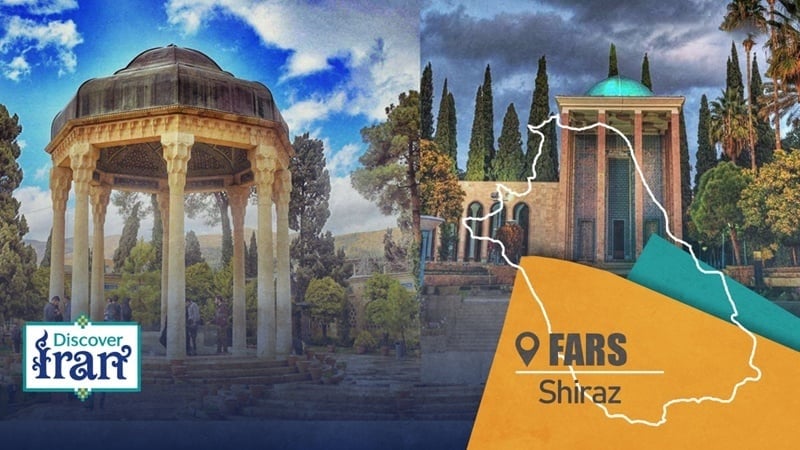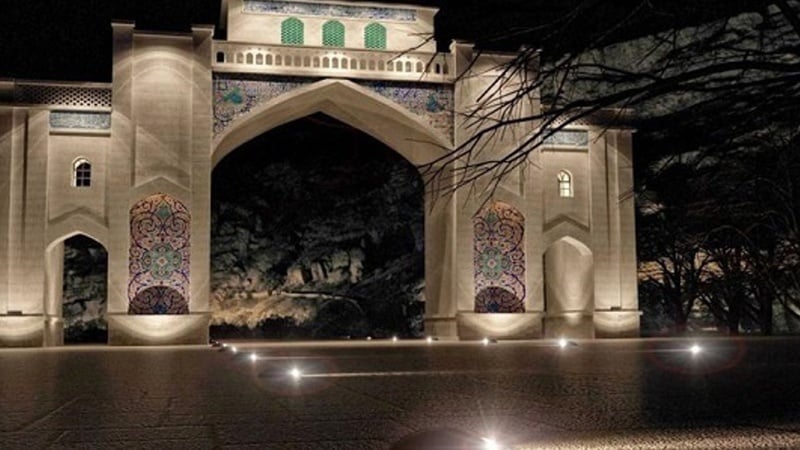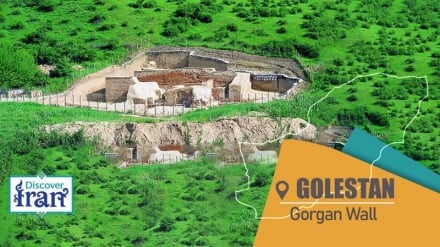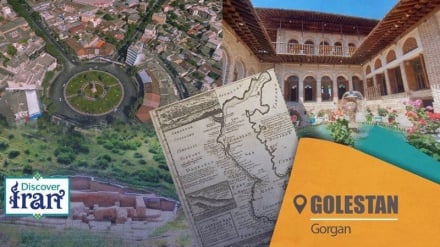Shiraz: Cultural capital of Iran, home to poets
-

Shiraz: Cultural capital of Iran, home of poets
Pars Today – Shiraz's favorable geographical location, combined with its fertile surrounding nature, has led to the flourishing of lush gardens and parks over the centuries.
The city of Shiraz in southern Iran is not only one of the country's most ancient cities but is also recognized as its cultural capital. According to Pars Today, citing Presstv, its abundance of historical and natural sites has made it a center for literature, philosophy, and poetry throughout Iranian history.
Central to Shiraz’s identity is its long-standing reputation as a city of poets, with legendary figures such as Hafez, Saadi, Khwaju Kermani, Jahan Malek Khatun, and Obayd-e Zakani defining its rich poetic and literary history.

Hafez: Nightingale of Shiraz
Hafez, born Khwaja Shams-ud-Din Muhammad Hafez Shirazi in 1325, is widely recognised as Iran’s national poet, whose verses have for centuries enamoured poetry lovers worldwide.
Hafez memorised the Holy Quran at a young age, earning the title “Hafez.” He spent his life in the city of Shiraz, where he composed the ghazels for which he is celebrated.
His poetry is considered the very epitome of the Ghazal tradition. It is marked by spiritual reflection, lyrical mastery, and philosophical depth, and has made a lasting impact on Persian literature and culture.
His verses have shaped Persian literature, inspired generations of writers and thinkers, and continue to be a reference point in Iranian daily life.
People turn to his verses for reflection, guidance, and expression. However, Hafez Shirazi’s influence extends beyond Iran. His poetry has held a hypnotic sway worldwide.
Western thinkers like Goethe, Nietzsche, Emerson, etc., have praised him as an ideal poet, spending years reading and learning from his seminal works.
His final resting place, Hafezieh, located in northern Shiraz, is a living cultural sanctuary. Surrounded by cypress trees, flowing fountains, and rose gardens, it draws thousands of visitors every year who come to pay homage, reflect, or perform Faal-e Hafez, a form of bibliomancy where a page from Hafez’s Divan is opened at random to offer guidance, reflection, or a poetic answer to life’s questions.
Hafezieh also becomes a focal point during major cultural and seasonal events such as Nowruz, the Persian New Year, and Shab-e Chella, the winter solstice vigil.
During these occasions, Iranians gather there to recite verses, reflect on the past year, and contemplate the year ahead, highlighting the continued cultural and social significance of Hafez’s work.
Saadi: Ethical voice of Shiraz
Born in 1210 in Shiraz, Abu-Muhammad Musharraf al-Din Muslih Saadi became one of the most influential poets and moralists of medieval Iran.
He travelled extensively throughout the Islamic world before returning to Shiraz, bringing with him knowledge of diverse cultures and philosophical ideas.
His experiences are reflected in his two major works: Bustan (The Orchard) and Gulistan (The Garden).
Bustan, written in 1257, is a collection of ethical teachings composed entirely in verse. It addresses justice, humility, love, and contentment, combining storytelling with moral guidance.
Gulistan, completed in the following year, blends prose and poetry in eight chapters that cover governance, ethics, the virtues of silence, etc.
Saadi’s work incorporates humour, anecdote, and practical advice, which make complex moral and philosophical ideas accessible to a wide audience.
Saadi’s emphasis on universal human dignity resonates beyond literature. His famous lines are engraved at the United Nations headquarters in New York:
“Human beings are members of a whole, in creation of one essence and soul.”
It reflects a vision of human solidarity that remains more relevant today.
His aphorisms and narratives continue to be taught in schools, cited in everyday speech, and incorporated into global discussions of ethics, emphasising Shiraz’s role as a source of cultural and moral authority.
The tomb of Saadi, known as Saadieh, is located in a quiet garden in the city of Shiraz and serves as a major cultural and literary site.
Each year on April 21, Iranians commemorate the National Commemoration Day of Saadi, visiting the site to honour the poet’s contributions to Persian literature and philosophy.
Built in the 13th century near the poet’s home, the mausoleum has been rebuilt and expanded over time, combining traditional Persian garden design with architectural elements that reflect Shiraz’s aesthetic and historical heritage.
Saadieh attracts visitors around the year – people who come to reflect on Saadi’s life and works. The garden, fountains, and surrounding greenery provide a contemplative environment for reading his texts, hosting educational programs, and promoting cultural engagement.
The site also exemplifies how Shiraz has preserved its poetic heritage, making the city a living repository of Persian literary history.
Jahan Malek Khatun: Female poet of Shiraz
Jahan Malek Khatun, a Shirazi princess and poet of the 14th century, represents a rare example of a woman whose complete poetic works have survived from the medieval period.
Born around 1325, she was the daughter of Masud Shah, then-king of Shiraz, who was murdered in 1342.
Her life, shaped by political turbulence and personal loss, is reflected in the emotional depth and complexity of her poetry.
Her poetry collection contains ghazels, rubaiyat (quatrains), praise poems, and several prose fragments, including elegies for her daughter.
The sheer scope of her work, combined with its quality, makes it historically significant. Her poems address themes of love, grief, and praise, offering insight into the experiences of women in a period when female authorship was rare.
Khwaju Kermani: Bridge between eras
Khwaju Kermani, a 14th-century poet, spent his later years in Shiraz after earlier periods in the provinces of Isfahan and Kerman.
He is known for his emotionally rich and spiritually infused poetry, often exploring themes of love, longing, and divine beauty.
He wrote almost 44,000 verses. His major works include Homay o Homayun, Gol o Nowruz, Ṣanayeʿ al-kamal and Badayeʿ al-jamal, Rowzat-ulanwar, etc.
Khwaju occupies a transitional position in Persian literature, bridging the ethical focus of Saadi and the mystical lyricism of Hafez.
He lived in the same era as Hafez and maintained a close relationship with him. As the senior and more seasoned poet, Khwaju’s mastery notably shaped the literary environment of Shiraz and left a deep impression on the emerging generation of poets.
His versatility and originality mark him as a pivotal figure in the evolution of Persian poetry, especially in refining the art of the ghazel.
Obayd-e Zakani: Satirist of Shiraz
Obayd-e Zakani, another prominent literary figure from Shiraz, is best known for his satirical and often politically critical poetry.
While less widely recognised than Saadi or Hafez, his work illustrates the city’s diverse literary culture, where lyrical, mystical, and satirical voices coexist.
Zakani’s poetry addressed social norms, hypocrisy, and the shortcomings of the powerful. His work highlights Shiraz’s intellectual engagement with the issues of its time.


